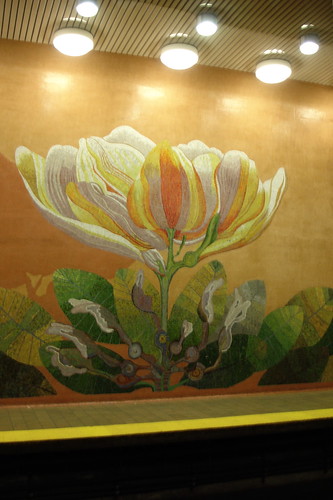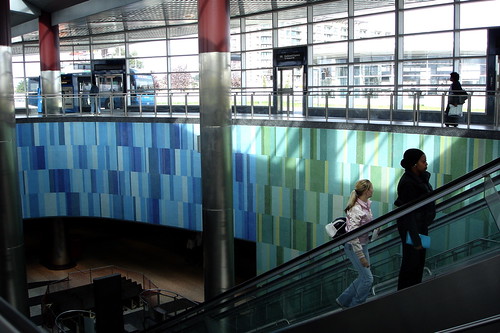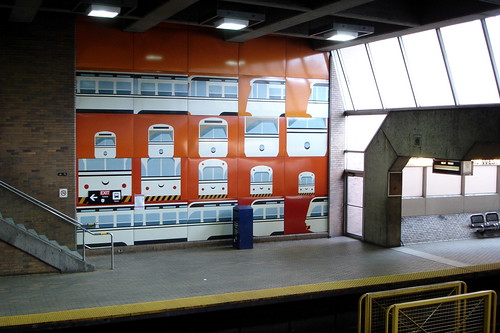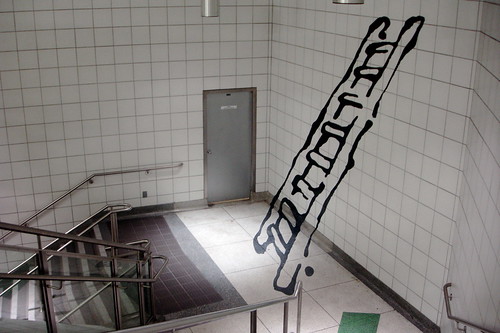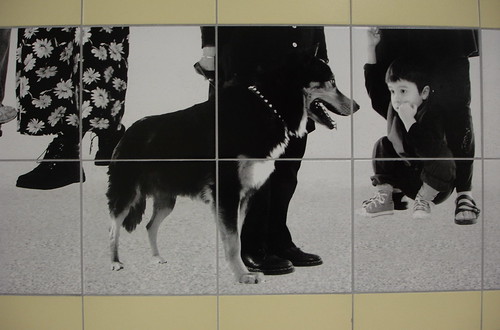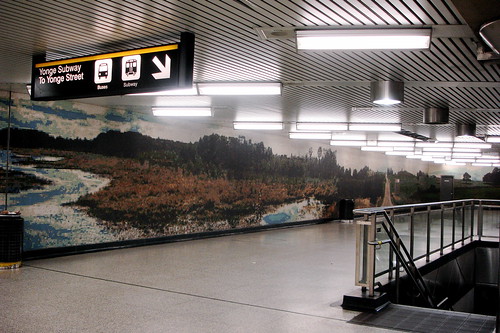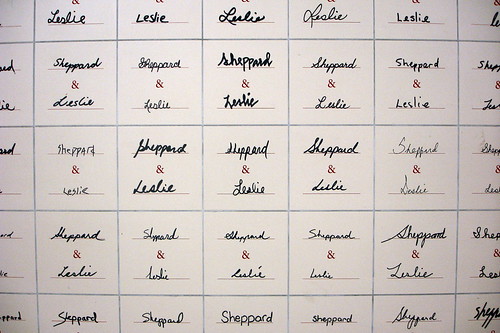Rotating art will brighten the stations on Canada Line
The only permanent piece will be at YVR-Airport Station
By Kelly Sinoski, Vancouver Sun
August 15, 2009
Musqueam artist Susan Point's cedar sculpture will be a permanent fixture at the YVR station for the Canada Line.
Photograph by: Jenelle Schneider, Vancouver Sun, Vancouver Sun
Canada Line passengers waiting for a train will have something to pique their interest: a series of public art pieces installed at stations along the 19-kilometre line.
The artwork is part of a Canada Line Public Art Program, which aims to engage the public and liven up the stations with "playful" pieces, said Jane Bird, CEO of Canada Line Rapid Transit Inc.
The pieces include a sculpture entitled La Chaise by Seattle artist Marie Khouri, which will likely be installed at Olympic Station.
The bright colourful work by artists Victor Cicansky and Joe Fafard, both of whom are represented by local galleries, and a train design by Yayoi Kusama, one of the Biennale partnerships, will also be featured. Some 10 pieces of artwork will be rotated around the rapid transit line and changed over time.
"The theme is they're all temporary," Bird said. "This was meant to be a first splash on opening day to get people thinking of art."
Only the YVR-Airport station will have a permanent fixture: a first nations sculpture by Musqueam artist Susan Point. Entitled Cedar Connection, the 10-foot-high, 10-foot- long and 11-foot-wide sculpture made of western red cedar is designed to reflect what the area once looked like.
The sculpture aims to depict the first nations people and their relationship with the great rainforest and the Fraser River.
The main body of the artwork represents an old-growth tree stump, with a flowing water-line motif representing the river. Inside the sculpture is a tufted weaving pattern that represents the tapestry of life.
An owl and a human face within the tree stump relate to the oral tradition within Salish culture. The owl is the keeper of wisdom and a messenger within the story of life, while the human face is a tribute to Musqueam storyteller Dominic Point.
InTransitBC is partnering with the Biennale for the public art project.
It has also asked the City of Vancouver to waive its City Retail Compensation fee, which allows it to lease retail operations in Canada Line stations, in exchange for dedicating the money to the public art program.
ksinoski@vancouversun.com
© Copyright (c) The Vancouver Sun






